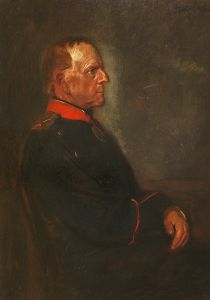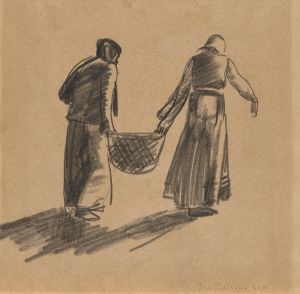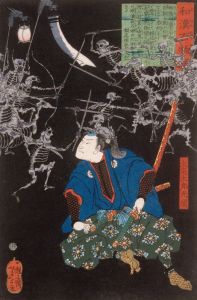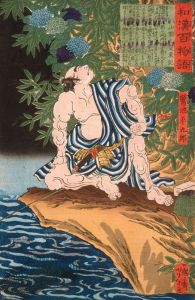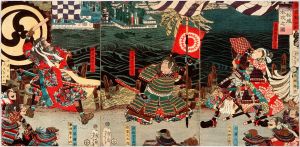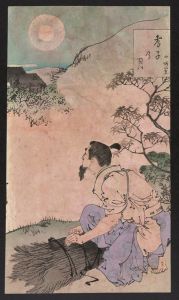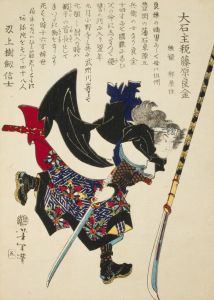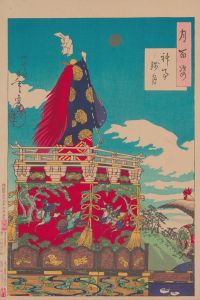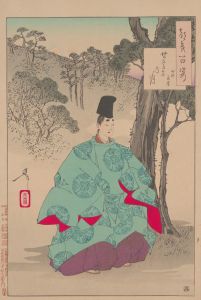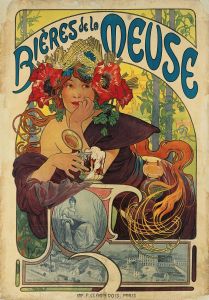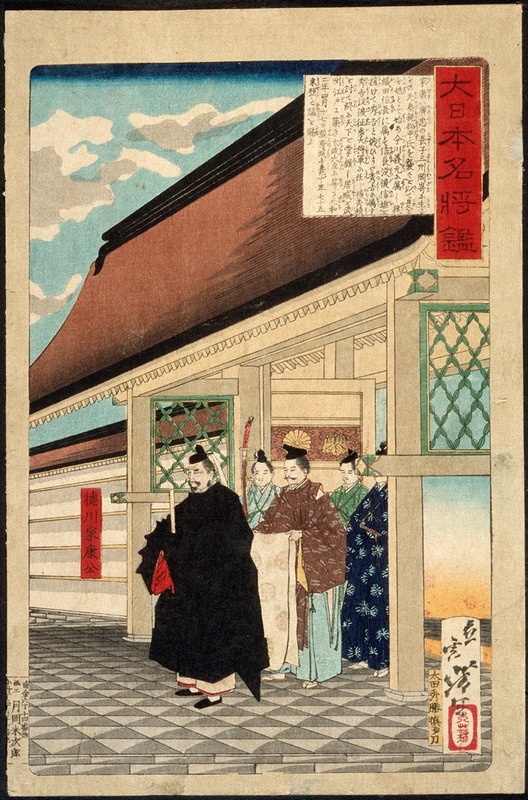
Tokugawa Ieyasu at the Entrance to a Palace
A hand-painted replica of Tsukioka Yoshitoshi’s masterpiece Tokugawa Ieyasu at the Entrance to a Palace, meticulously crafted by professional artists to capture the true essence of the original. Each piece is created with museum-quality canvas and rare mineral pigments, carefully painted by experienced artists with delicate brushstrokes and rich, layered colors to perfectly recreate the texture of the original artwork. Unlike machine-printed reproductions, this hand-painted version brings the painting to life, infused with the artist’s emotions and skill in every stroke. Whether for personal collection or home decoration, it instantly elevates the artistic atmosphere of any space.
"Tokugawa Ieyasu at the Entrance to a Palace" is a woodblock print by the renowned Japanese artist Tsukioka Yoshitoshi, who was active during the late Edo and early Meiji periods. Yoshitoshi is celebrated for his innovative approach to traditional ukiyo-e art, and his works often reflect a deep engagement with historical and cultural themes. This particular print is part of Yoshitoshi's larger body of work that frequently depicted historical figures and events from Japanese history.
The subject of the print, Tokugawa Ieyasu, was a pivotal figure in Japanese history, known for founding the Tokugawa shogunate, which ruled Japan for over 250 years, from 1603 to 1868. Ieyasu's leadership and political acumen were instrumental in unifying Japan after a long period of civil war and unrest, known as the Sengoku period. His establishment of a stable and enduring government laid the groundwork for the Edo period, a time of relative peace and cultural flourishing in Japan.
In "Tokugawa Ieyasu at the Entrance to a Palace," Yoshitoshi captures the gravitas and authority of Ieyasu, likely emphasizing his role as a unifier and a shrewd leader. The depiction of Ieyasu at a palace entrance may symbolize his consolidation of power and the establishment of a new era of governance. Yoshitoshi's attention to detail and his ability to convey the character and significance of historical figures are evident in this work.
Yoshitoshi's style is characterized by its dynamic composition and expressive use of color and line, which are hallmarks of the ukiyo-e tradition. However, Yoshitoshi also incorporated elements of Western art, which was becoming increasingly influential in Japan during the Meiji period. This blend of traditional and modern techniques is part of what makes Yoshitoshi's work distinctive and historically significant.
The context in which Yoshitoshi created this print is also noteworthy. The Meiji Restoration, which began in 1868, marked the end of the Tokugawa shogunate and the beginning of Japan's rapid modernization and Westernization. During this time, there was a renewed interest in Japan's feudal past, and artists like Yoshitoshi played a crucial role in preserving and interpreting historical narratives through their work.
"Tokugawa Ieyasu at the Entrance to a Palace" is not just a representation of a historical figure; it is also a reflection of the cultural and political shifts occurring in Japan during Yoshitoshi's lifetime. The print serves as a bridge between Japan's past and its then-present, capturing the complexities of a nation in transition.
Yoshitoshi's legacy as an artist is significant, as he is often credited with revitalizing the ukiyo-e genre during a time when it was in decline. His works continue to be studied and appreciated for their artistic merit and their insightful portrayal of Japanese history and culture. "Tokugawa Ieyasu at the Entrance to a Palace" remains an important piece within Yoshitoshi's oeuvre, offering viewers a glimpse into the life of one of Japan's most influential leaders through the eyes of one of its most talented artists.






